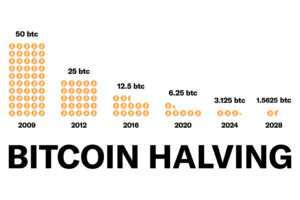The Markets in Crypto-Assets (MiCA) regulation introduces fundamental changes in how the European Union oversees crypto assets. MiCA achieves two main objectives through its regulatory framework: investor protection and increased market visibility while providing financial stability to crypto assets.
Institutions can use specific regulatory exemptions called “loopholes” to successfully navigate MiCA and maintain cost-effective transactions while engaging in non-custodial trading activities.
Navigating MiCA Without Breaking the Bank
The main operational and transaction cost concern for institutions implementing MiCA is the greater regulatory oversight that they face. The bulk of innovative businesses recognize MiCA obligations as their opportunity to develop compliance frameworks that avoid large expenses.
The following approaches can be helpful to institutions:
1. Leveraging Technological Innovation
Modern financial institutions use automated smart contracts technology to enhance their compliance process management. MiCA-compliant automated reporting and real-time monitoring solutions powered by Blockchain enable both proper standards maintenance and automated cost-efficient operations that would have required manual interventions in the past.
2. Optimizing Clearing and Settlement Mechanisms
Clearing and settlement system infrastructure powered by distributed ledger technology and algorithms can perform transactions more efficiently to decrease operational expenses. Organizations supporting these technologies achieve faster trade processing, which preserves and maximizes the size-related benefits of their operations despite regulatory costs.
3. Partnering with Specialized Service Providers
Establishing partnerships with companies focused on regulatory technology enables institutions to distribute their compliance duties. These providers give advanced solutions that improve your ability to stay compliant with MiCA rules while minimizing transaction expenses.
4. Adopting a Compliance-by-Design Approach
Forward-thinking establishments include regulatory requirements within their platform design foundations to minimize the need for future retroactive adjustments. The proactive design approach lowers the costs of necessary retroactive changes, which helps institutions run lean operations in various regulatory environments.
Non-Custodial Trading Under MiCA
Many institutions focus on non-custodial trading access because it lets users maintain asset ownership control, reducing counterparty risks and requirements for centralized fund storage. The introduction of MiCA concentrates mainly on regulating custodial trading, but institutionally, it still enables certain avenues to offer non-custodial trading services.
While MiCA largely addresses custodial trading practices, there are still potential avenues for institutions to facilitate non-custodial trading:
1. Decentralized Finance (DeFi) Protocols
Most decentralized platforms function under principles that do away with their need for traditional custodial practices. Financial institutions that integrate DeFi protocols and smart contracts can develop non-custodial trading systems which avoid the principal requirements of MiCA as asset custodian. These platforms require thorough risk management systems that meet all regulatory requirements.
2. Peer-to-Peer Trading Networks
Creating novel peer-to-peer transaction platforms, either individually or through cooperation, is another regulatory option for institutions. These networks allow buyers and sellers to match directly since participants can execute transactions without needing the firm to hold any assets in custody, thus offering a decentralized and fee-efficient trading environment.
3. Innovative Client Wallet Solutions
The widespread adoption of integrated wallet solutions offers institutions a secure method to combine traditional warfare protocols with decentralized wallet capabilities. Clients maintain control of their passwords through private key ownership. Still, the institution offers users a secure platform that supports trading activities as per accepted guidelines and without taking complete ownership of assets.
Best Practices and Cautions
We can safely say that these opportunities are promising. Thus, institutions should do their due diligence as they explore these “loopholes.”
Here’s how:
-
- – Proactive legal consultation.
-
- – Robust risk management.
-
- – Transparency and consumer education.
-
- – Agility in operations.
Parting Shot
The MiCA initiative is a major regulatory achievement that seeks to establish an equilibrium between protecting crypto asset innovation and safeguarding market honesty. The new requirements from this regulatory framework expand institutional responsibilities but do not create a standard set of rules that hinder creative development. Establishments under MiCA will benefit from technological innovation, restructured transactions and non-custodial trading approaches. These approaches control transaction costs and enable innovative crypto market solutions to meet current market requirements.
Strategic institutions comprehending MiCA’s existing loopholes can convert these potential regulatory hurdles into benefitting opportunities.
Image Source: Adobe Stock
Disclaimer: This article is purely for informational purposes. It is not offered or intended to be used for legal, tax, investment or financial advice.
- – Robust risk management.












